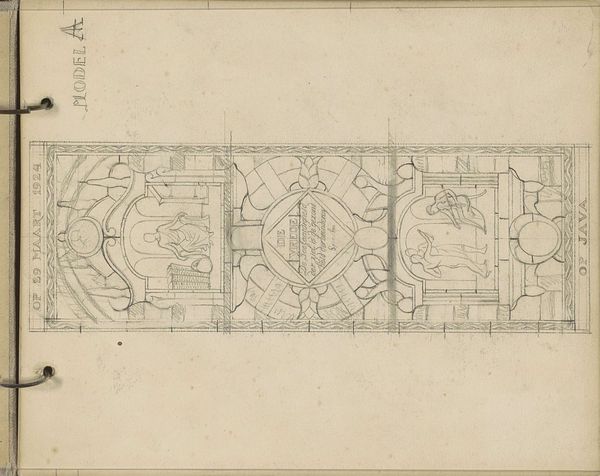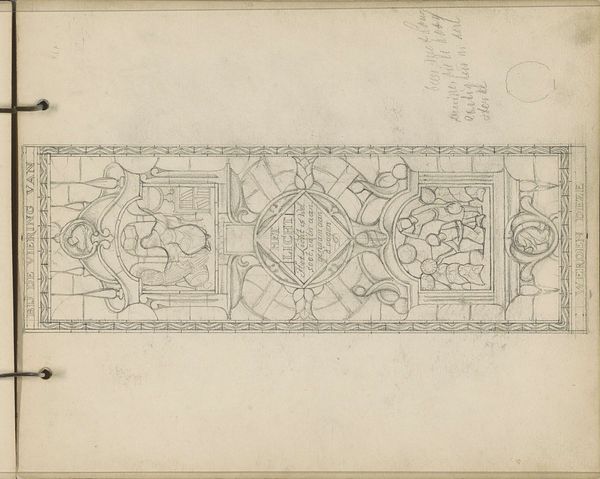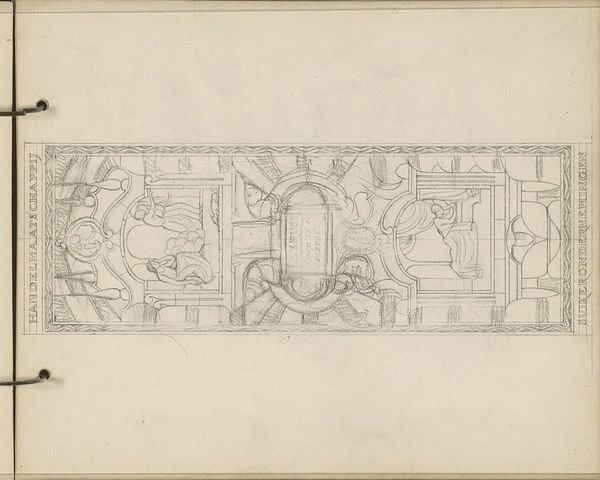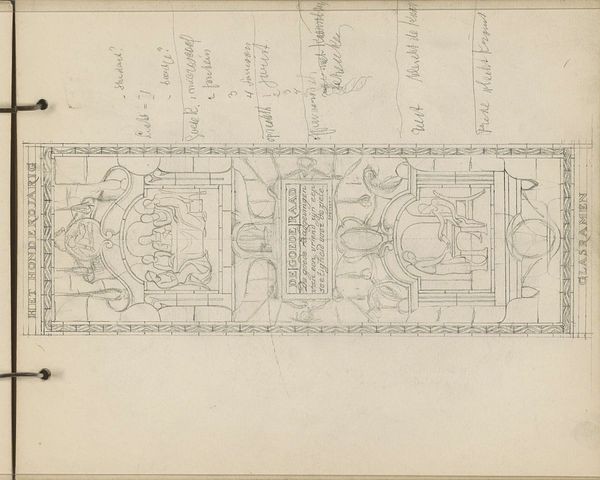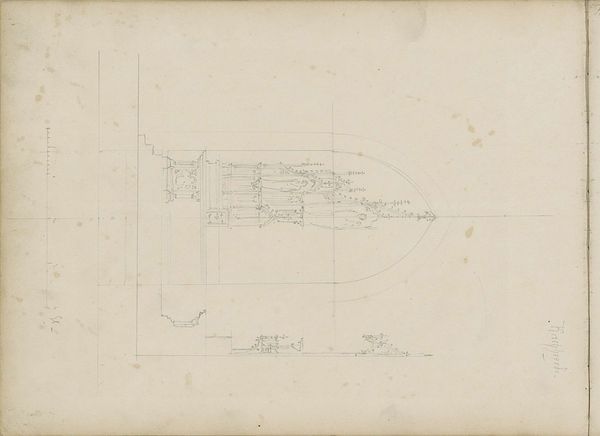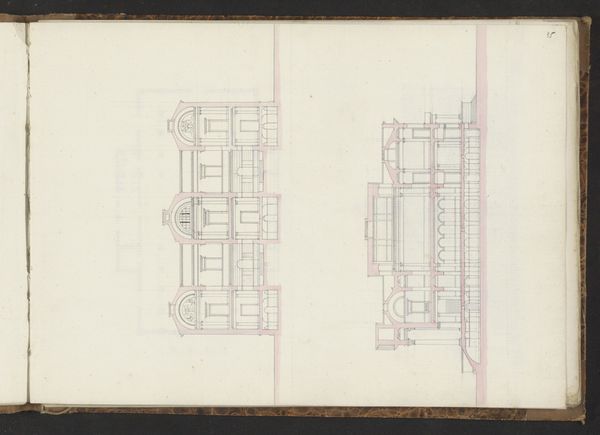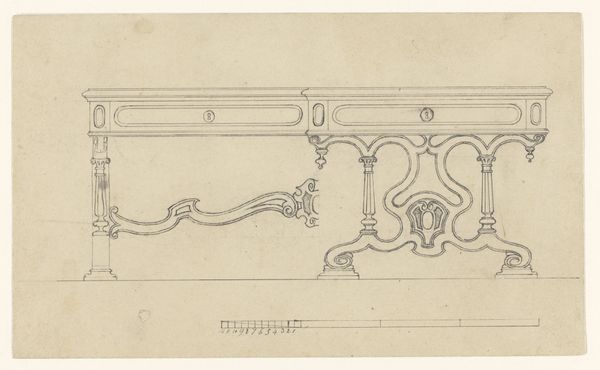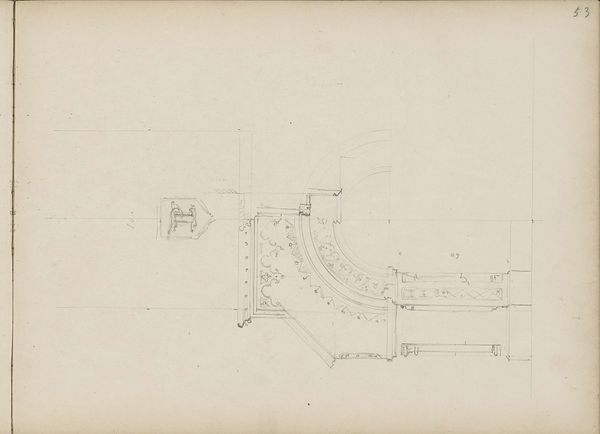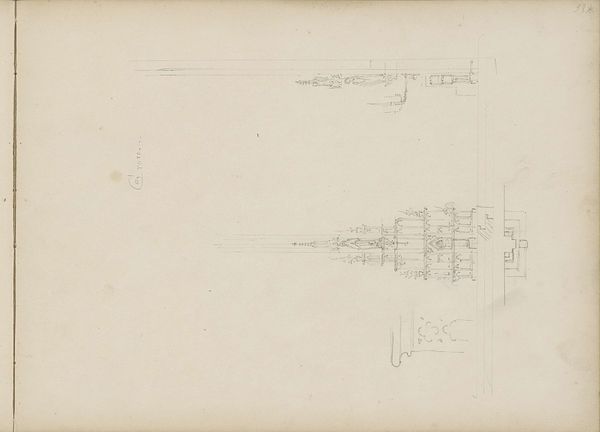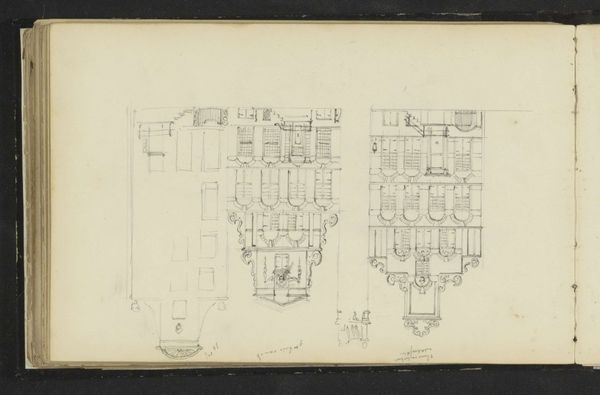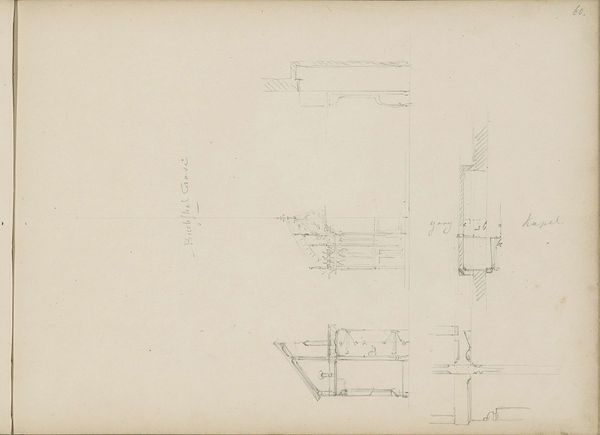
Ontwerp voor een glas-in-loodraam met als thema 'De Offervaardigheid' 1923 - 1924
0:00
0:00
Copyright: Rijks Museum: Open Domain
Editor: This drawing, titled "Ontwerp voor een glas-in-loodraam met als thema 'De Offervaardigheid,'" meaning "Design for a stained-glass window with the theme 'The Sacrificial Spirit'," was created by Antoon Derkinderen around 1923-1924. It’s a pencil drawing on paper, seemingly a sketch for a stained-glass window. The sketch feels very formal and symmetrical to me. What catches your eye about it? Curator: The symmetry certainly speaks to the intended permanence of the piece, designed to be rendered in the durable medium of stained glass. Look closely – the architectural framework, the repeated motifs… they create a sense of established order, a visual language used to convey themes like "Sacrificial Spirit." Notice how the inscription is centered and framed. Do you recognize other visual symbols that reinforce this theme? Editor: I see what looks like figures, one on each side, but they're quite stylized and hard to decipher. Are these common symbols related to sacrifice? Curator: Indeed. Consider the posture and placement of those figures, nearly mirroring each other, held within circular cartouches of a traditional triptych format, suggesting balance and perhaps contrasting or complementary ideas around the core offering represented centrally in the text and potential imagery in glass to come. This work suggests how Derkinderen’s drawing engages with the power of symbolic representation in a spiritual and cultural context. It really asks what sacrifices define the “Dutch Spirit." How might the window's eventual colors contribute to the understanding of its symbols? Editor: That's a fascinating point. I was so focused on the lines and shapes that I didn't think about how color would completely change the way the piece is read! Now I'm thinking about the cultural context during the 1920s; it’s interesting to consider how "sacrifice" might have resonated with people after the First World War. Curator: Precisely. Art doesn't exist in a vacuum. Editor: I’m definitely seeing this piece in a new light now. Thinking about the stained glass as something with intentional cultural symbolism rather than a simple aesthetic.
Comments
No comments
Be the first to comment and join the conversation on the ultimate creative platform.

